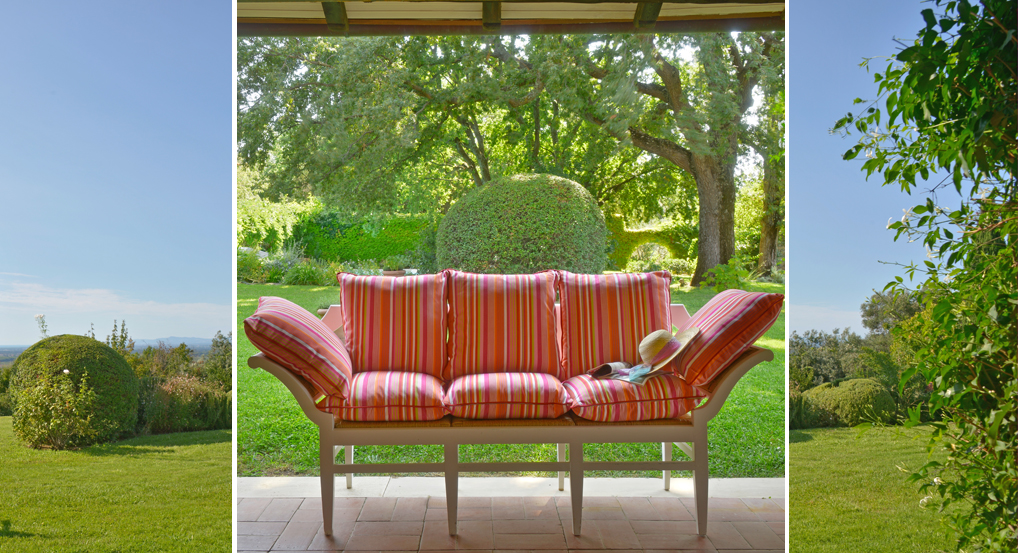• Beaches: The coast between Livorno and Piombino has been awarded Europe’s Blue Flag various times.
• Bolgheri: the NYTimes thinks this village is one of the 45 most desirable places to visit in the world. The Viale dei Cipressi, a three-mile road bordered by 2,500 cypress trees, leads straight into Bolgheri where you can stroll, do some shopping, have an aperitivo and try some of the best restaurants of the area. Th jet-set meets at the caffè della Posta where you can taste some of Bolgheri’s reds. Their ice cream Bolgheri Ti Amo is made with organic and local ingredients.
• It is here that Bolgheri DOC wines are produced – world-class wines such as Sassicaia, Guado al Tasso and Ornellaia as well as numerous others of the highest quality. This “Eldorado of Italian wine” as it has been called became an internationally known region following an event in 1974 arranged by Decanter where a 6-year-old Sassicaia won over an assortment of Bordeaux wines. Bolgheri has become one of the most interesting and gifted areas in the whole universe of wine thanks to some illuminated personages, among such as Mario Incisa della Rocchetta, the oenologist Giacomo Tachis and the Marchesi Piero and Lodovico Antinori. Guado al Tasso has its own little shop where you can buy the estate’s wines as well as different hams and salami made from the estate’s own breed of local pigs (cinta senese), olive oil and pasta sauces.
• A tour of the Guado al Tasso winery followed by a tasting can be organised upon request. Please book ahead, places are limited.
• An excellent Spa – The Tombolo Talasso Resort belonging to the Antinori family – lies in the next village.
• Castagneto Carducci: An enchanting medieval village built around the Gherardesca Castle. In 1907 the name of this municipality was changed in honour of poet Giosuè Carducci who spent a year here with his family. The medieval castle has been enriched in time and offers stunning views of the valley. Each spring Castagneto is the venue for a major gourmet festival which attracts enthusiasts from all over Italy.
• The golf of Baratti and Populonia : Baratti is a lovely bay with great swimming & impressive umbrella pine trees. The medieval village of Populonia is well worth a visit. Climb up the tower for amazing views over Baratti & along the coast.
• Massa Marittima. Here, in one of Etruria’s oldest and most prosperous communities, the same minerals that were extracted 2,500 years ago are still being mined. The first miner’s code in Europe was drawn up here in 1310. Three years earlier, the graceful Romanesque-Gothic cathedral was completed. Decorated with three orders of arches and slender columns supported by lion-headed capitals, it stands on a steep flight of stairs above the square that contains Massa’s medieval buildings, an architectural grouping characteristic of 13th-century Tuscan cities: the travertine Palazzo Pretorio of 1230 with its escutcheons of former mayors, the Palazzo Communale, formed of three crenelated tower-houses and decorated with frescoes, among them a Lorenzetti Madonna.
• Livorno is Tuscany’s main port and was designed as an “ideal town” during the Italian Renaissance. The laws offered the right of public freedom of religion which attracted numerous Jewish immigrants, who contributed to the mercantile wealth and scholarship in the city. Even tough the city suffered extensive damage during the Second World War the part of town called “Venezia Nuova” (Little Venice) is well worth a visit.
• The Parks of the Val di Cornia: The parks stretch along the coastal strip opposite the Island of Elba. The various archaeological and natural sites of the Parks make this area an interesting alternative to the traditional tourist destinations: a place where nature and archaeology converge to let you discover the charm of the “Toscana Minore”. More information on www.parchivaldicornia.it
• Everyone knows the Leaning Tower of Pisa, but the city of Pisa is not just the Tower, nor the marvellous Piazza dei Miracoli . Some of the less-visited attractions include one of Pisa’s oldest churches, San Paolo a Ripa d’Arno located in the middle of a magnificent garden by the river Arno. The Sinopias Museum with its magnificent collection of fresco sketches. Don’t miss a walk on Le Piagge, a tree-lined boulevard running along the river , beginning at Ponte della Vittoria and ending at Ponte delle Bocchette. It is very popular among the locals, Le Piagge makes for a nice off-the-beaten-path walk in Pisa, and a perfect way to discover Pisa away from the crowds of the main sites. More information on www.pisaunicaterra.it













































